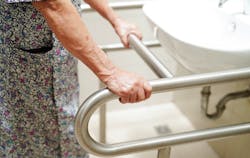Aging Americans Are Finding a Severe Shortage of Affordable, Accessible Housing
Roughly 1 in 5 Americans will be older than 65 by 2030, but according to CNBC, there is not enough affordable housing in the U.S. to accommodate an aging population. Less than 5% of the national housing supply includes accessible features such as wider doorways, lower counters and sinks, and bathrooms with safety accessories like handrails, and even fewer homes (less than 1% of U.S. housing) are accessible for those who use wheelchairs.
Developing more affordable, accessible housing is a pressing need as the U.S. population ages, but making it a reality depends on new legislation to resolve higher infrastructure costs, supply chain constraints, workforce shortages, and increased materials costs currently delaying new construction.
Retrofitting older homes to update them and improve accessibility may be one solution, said Jenny Schuetz, a senior fellow at Brookings Metro. However, updating millions of homes is an “enormous task” that would require both private and public capital, she said.
Making homes more affordable for elderly and disabled populations is crucial, said Allie Cannington, senior manager of advocacy at The Kelsey, a disability-forward housing developer.
“For people with disabilities who rely on Supplemental Security Income and other forms of federal assistance, there is no U.S. housing market where rent is affordable,” Cannington said, an issue that affects more than 4.8 million people with disabilities.
